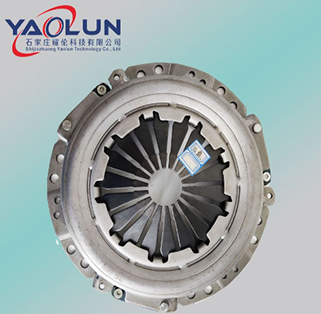What is the function of clutch?
The clutch is a vital component in a manual transmission system that allows for the smooth engagement and disengagement of power between the engine and the transmission. The primary function of the clutch is to disconnect the engine from the transmission when changing gears, enabling the driver to shift smoothly and efficiently without causing damage to the transmission or engine.

In a manual transmission system, the engine is directly connected to the gearbox, which in turn is connected to the wheels via the driveshaft and differential. When the engine is running, it continues to rotate even when the vehicle is stopped or in neutral. Without a clutch, the engine would continue to spin the transmission even when the driver is not engaging the gear, resulting in increased fuel consumption, wear and tear, and potential damage to the transmission.
The clutch allows the driver to smoothly engage and disengage the engine from the transmission. When the clutch pedal is pressed, a hydraulic or cable system disengages the clutch, separating the engine from the transmission, allowing the driver to shift gears smoothly. When the clutch pedal is released, the clutch re-engages, and power is once again transmitted from the engine to the transmission, allowing the vehicle to accelerate.
There are several components that make up a clutch system, including the clutch disc, pressure plate, and flywheel. The clutch disc is a friction disc that is located between the engine and the transmission, and it is responsible for transmitting power from the engine to the transmission. The pressure plate applies pressure to the clutch disc, allowing it to engage and transmit power to the transmission. The flywheel is a heavy metal disc that is attached to the engine and provides the inertia necessary for smooth operation of the clutch.
The clutch system also includes a release bearing and a pilot bearing. The release bearing applies pressure to the pressure plate when the clutch pedal is pressed, disengaging the clutch. The pilot bearing helps to support the transmission input shaft and keep it centered within the flywheel.
There are different types of clutches used in vehicles, including mechanical, hydraulic, and electromagnetic clutches. Mechanical clutches are operated by a cable or linkage, while hydraulic clutches use a hydraulic system to engage and disengage the clutch. Electromagnetic clutches are used in some automatic transmissions and engage and disengage the clutch using an electrical signal.
In summary, the clutch is a critical component in a manual transmission system that allows for the smooth engagement and disengagement of power between the engine and the transmission. It enables the driver to shift gears smoothly and efficiently, without causing damage to the transmission or engine. The clutch system comprises several components, including the clutch disc, pressure plate, flywheel, release bearing, and pilot bearing. Different types of clutches, such as mechanical, hydraulic, and electromagnetic, are used in vehicles, depending on the application.
评论
发表评论